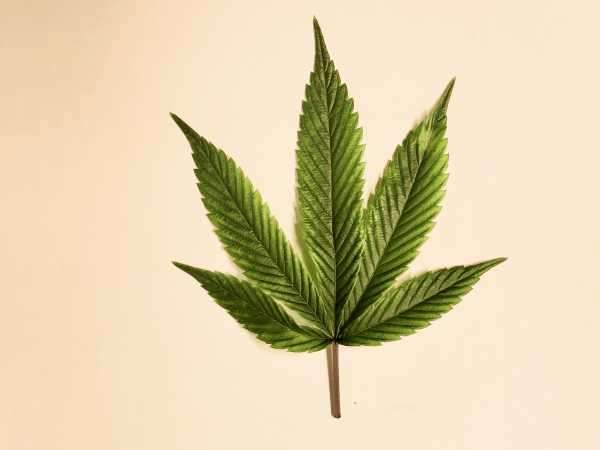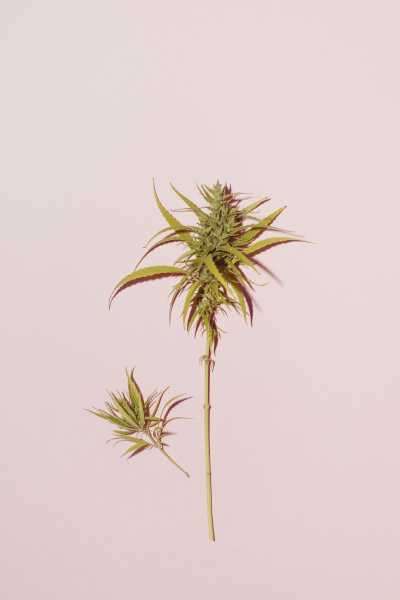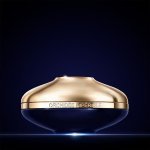As the first CBD brand to be EWG Verified, Prima seeks to clear up the confusion.
Olena RubanGetty Images
Search Google Images for “CBD skincare” and here’s what you’ll get: green bottles, green backdrops, and so, so many slender and spiky cannabis sativa leaves. (Also green, naturally.) It’s a fairly straightforward marketing tactic, all this viridescence and verdure, meant to make you see cannabidiol as natural, pure, safe, and sustainable. Psychologically, green translates to “clean.”
Pragmatically, however, it does not.
CBD’s Clean Beauty Problem
Though cannabidiol—also known as CBD, the buzziest cannabinoid in the beauty business—is derived from plants both leafy and green, that fact often has little bearing on the “clean” factor of a product’s final formulation. Plenty of recent launches boast cannabis sativa on the front of their labels and questionable ingredients on the back: mineral oils, PEGs, undisclosed fragrances, known skin sensitizers, and more. “Because CBD has been positioned almost as a hero ingredient, I do feel like there’s a disconnect between it being one of many botanicals in a product, versus it being the highlighted ingredient in a sea of potentially harmful industrial compounds,” Jessica Assaf, the cofounder and chief education officer of CBD skincare brand Prima, tells BAZAAR.com.

Cappi ThompsonGetty Images
Assaf is more intimately acquainted with said harmful industrial compounds than most. As a teenager, she cofounded the activist organization Teens for Safe Cosmetics and advocated for clean beauty before “clean beauty” was a $25 billion-a-year category. In 2008, Assaf participated in the Environmental Working Group’s Teen Body Burden study. “My blood and urine were [tested], and 13 of 30 industrial compounds were found in my body,” she says; including those commonly found in cosmetics, like phthalates and parabens. “I finally had evidence to say that this matters, and we have control over some of these things in terms of the products we use.” After the study was complete, “the EWG remained instrumental in my early work of trying to compel companies to reformulate,” she notes. “We convinced O.P.I. to remove formaldehyde-releasing preservatives [from its nail polish].”
More than a decade later, the teen activist-turned-clean beauty cofounder is once again partnering with the nonprofit; this time, to announce Prima as the first hemp CBD brand to earn the rigorous EWG Verification on its skincare products.
“To me, it’s a safety stamp,” says Assaf—a safety stamp that some say is much needed in an industry that operates on a post-market regulatory system and profits off manipulative marketing claims.
“There is nobody enforcing what it means to be clean, nontoxic, or safe,” clarifies Laurel Angelica Myers, Prima’s cofounder and COO. “It’s not something the Food and Drug Administration has defined, and brands can use [those terms] in their marketing in any which way they please.” (See also: the above greenwashing.) “That’s why it’s really important for us to partner with independent, third-party, trusted advocacy groups and nonprofits to provide credibility for what we say that we’re doing,” says Myers.
Related Story

Clean Beauty 101
What is the EWG?
Clean beauty enthusiasts likely already know and trust the EWG, or the Environmental Working Group: It’s the organization behind the Skin Deep cosmetics database, a running master list of cosmetic ingredients and corresponding safety studies that consumers can cross-check with their personal care products. “The Skin Deep database was my own aha moment,” Myers tells BAZAAR. “The EWG opened people’s eyes to the fact that there are ingredients available on the market that pose human health and safety risks, and Skin Deep offers an easy way to understand and assess and make smarter choices.”

Westend61Getty Images
But where Skin Deep relies on generalized ingredient data, the EWG Verified certification zeroes in on specific products from specific brands, taking into account everything from where the exact materials are sourced, to how the ingredients are processed, to the concentrations in the finished formulas. “Their team then has a team of toxicologists that goes through and assesses everything and identifies where these ingredients fall on the health and safety spectrum,” Myers explains. (The EWG looks to stricter international governing bodies, like Japan’s Ministry of Health and Health Canada, for guidance.) “There’s an additional documentation review where we provide concentrations of our ingredients, spec sheets, certificates of analysis, sometimes even process flow to look at potential contamination of ingredients,” the Prima COO shares.
In order to meet EWG Verified requirements, products must have a low-risk score of one or two (out of 10) in the Skin Deep database, and brands must disclose “additional information not typically found on the product label in an effort to drive the market toward greater transparency,” notes the brand. For example, the EWG requires that brands share their fragrance components—typically protected by FDA legislation around “proprietary” information—before they can be verified.
So what does this mean for customers? Basically, that when you see the EWG Verified mark on a product, you can rest assured that every single ingredient inside has been sufficiently vetted for safety (so you don’t have to do it yourself). This is especially appealing in the very trendy, often confusing, still evolving category of CBD skincare.
How Prima Is Redefining Clean CBD
Source: www.harpersbazaar.com






